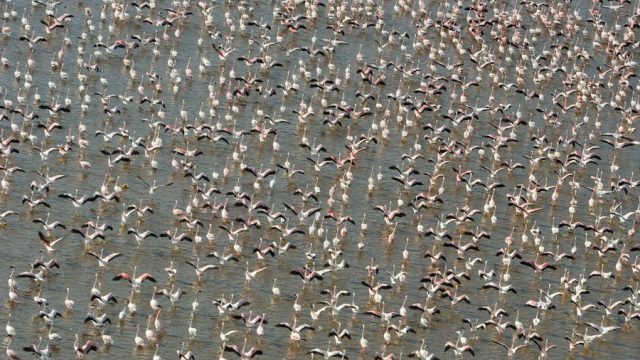Every year in Kenya, from April through June, some of the most beautiful creatures in the world converge upon the country. But it’s not leopards nor zebras — it’s flamingos making their annual migration!
Thousands, sometimes millions of flamingos flock to the Rift Valley Lakes of East Africa – specifically Lake Bogoria and Lake Nakuru — turning the lakes into vision of constantly moving pink.

Courtesy of Ian White/Flickr.com
Lake Nakuru is famous for its huge flocks of flamingos that gather in the shallow soda lake (a lake with high alkalinity) in the Rift Valley. Drawn to its warm waters, the flamingos, along with hundreds of other bird species, blanket the surface of the lake giving the impression that you’ve just entered a real-life Candyland. Lake Nakuru also serves as a sanctuary for endangered black and white rhinos, and offers a good shot at spotting baboons, lions, gazelles, and the elusive leopard, among others.
Lake Bogoria, located about 60km from Nakuru town, is a saline lake which boasts not only the yearly flamingo migration, but also steam geysers and hot springs. It’s a popular destination for those seeking to soak in the healing mineral water while enjoying the spectacular Kenya wildlife.

Flamingos in Kenya / Shutterstock
The two species of flamingo you’ll see at these lakes are the Greater Flamingo (the largest of the flamingo species) and the Lesser Flamingo (found in sub-Saharan Africa and India). These are both distinct from the American Flamingo you’ll find in the United States.
The flamingos’ pink color comes from the pigments in the organisms they eat, such as pink shrimp and algae. Effectively, the flamingo’s diet determines its color. The number of flamingos you’ll see at either lakes depends on a lake’s quantity of algae. Less algae, fewer flamingos, and vice versa.
Want to discover the finer side of Africa? Sign up for our weekly newsletter.



